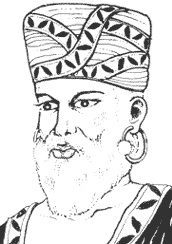Charaka —  A physician who fails to enter the body of a patient with the lamp of knowledge and understanding can never treat diseases. He should first study all the factors, including environment, which influence a patient’s disease, and then prescribe treatment. It is more important to prevent the occurrence of disease than to seek a cure.
A physician who fails to enter the body of a patient with the lamp of knowledge and understanding can never treat diseases. He should first study all the factors, including environment, which influence a patient’s disease, and then prescribe treatment. It is more important to prevent the occurrence of disease than to seek a cure.
These remarks appear rudimentary today, but they were made by Charaka, some 20 centuries ago in his famous Ayurvedic treatise Charakasamhita. The treatise contains many more such remarks which are held in reverence even today. Some of them are in the fields of physiology, etiology and embryology.
Charaka was the first physician to present the concept of digestion, metabolism and immunity. According to him a body functions because it contains three dosha or humours, namely, bile, phlegm and wind. These dosha are produced when dhatus, namely, blood, flesh and narrow, act upon the food eaten. For the same quantity of food eaten, one body, however, produces dosha in an amount different from another body. That is why one body is different from another. For instance, it is more weighty, stronger, more energetic.
Further, illness is caused when the balance among the three dosha in a human body is disturbed. To restore the balance he prescribed medicinal drugs. Although he was aware of germs in the body, he did not give them any importance.
Charaka also knew the fundamentals of genetics. For instance, he knew the factors determining the sex of a child. A genetic defect in a child, like lameness or blindness, he said, was not due to any defect in the mother or the father, but in the ovum or sperm of the parents-an accepted fact today.
Charaka also studied the anatomy of the human body and various organs. He gave 360 as the total number of bones, including teeth, present in the body. He wrongly believed that the heart had one cavity, but he was right when he considered it to be a controlling center. He claimed that the heart was connected to the entire body through 13 main channels. Apart from these channels, there were countless other ones, some big and some small, which supplied not only nutrients to various tissues but also provided passage to waste products. He also claimed that any obstruction in the main channels led to a disease or deformity in the body.
Under the guidance of the ancient physician Atreya, Agnivesa had written an encyclopedic treatise in the eighth century B.C. However, it was only when Charaka revised this treatise that it gained popularity and came to be known as Charakasamhita. For two millenniums it remained a standard work on the subject and was translated into many foreign languages, including Arabic and Latin. However, there is nothing known about Charaka as a person. It is said that he was the son of a sage who traveled from place to place on foot to cure the suffering masses.
 Kids Portal For Parents India Kids Network
Kids Portal For Parents India Kids Network






